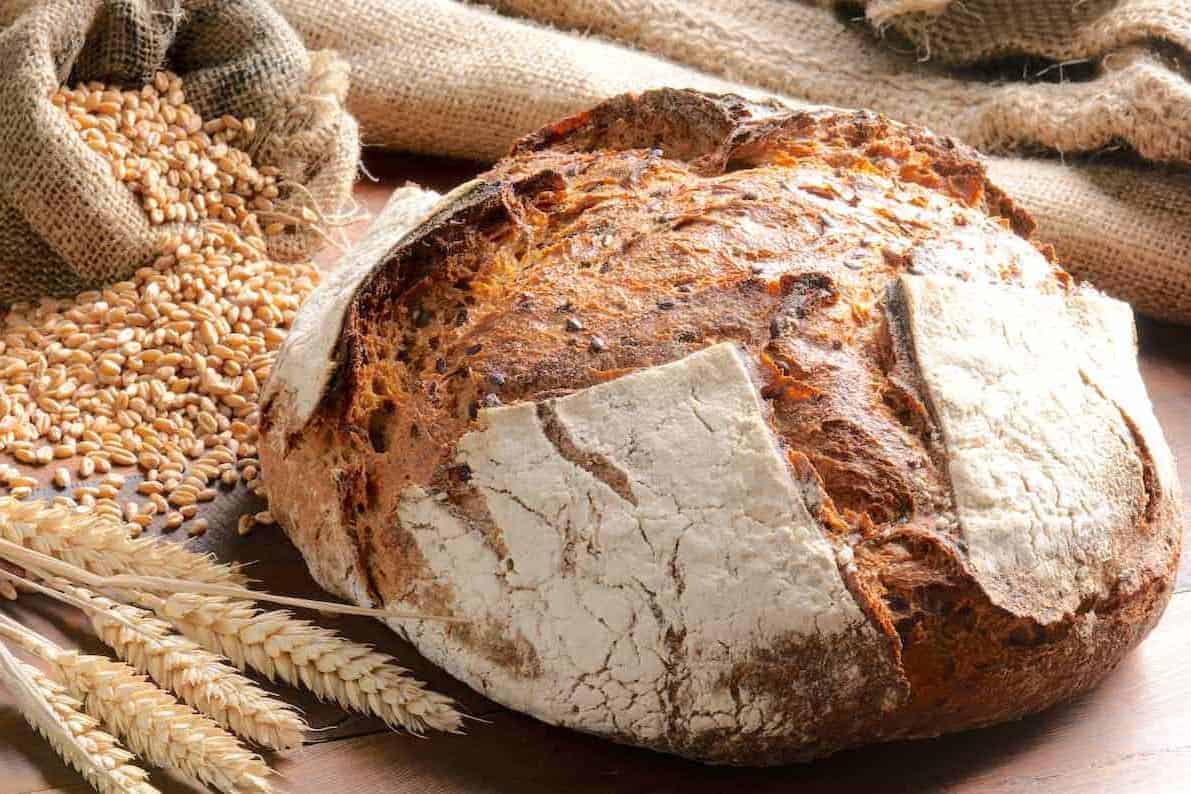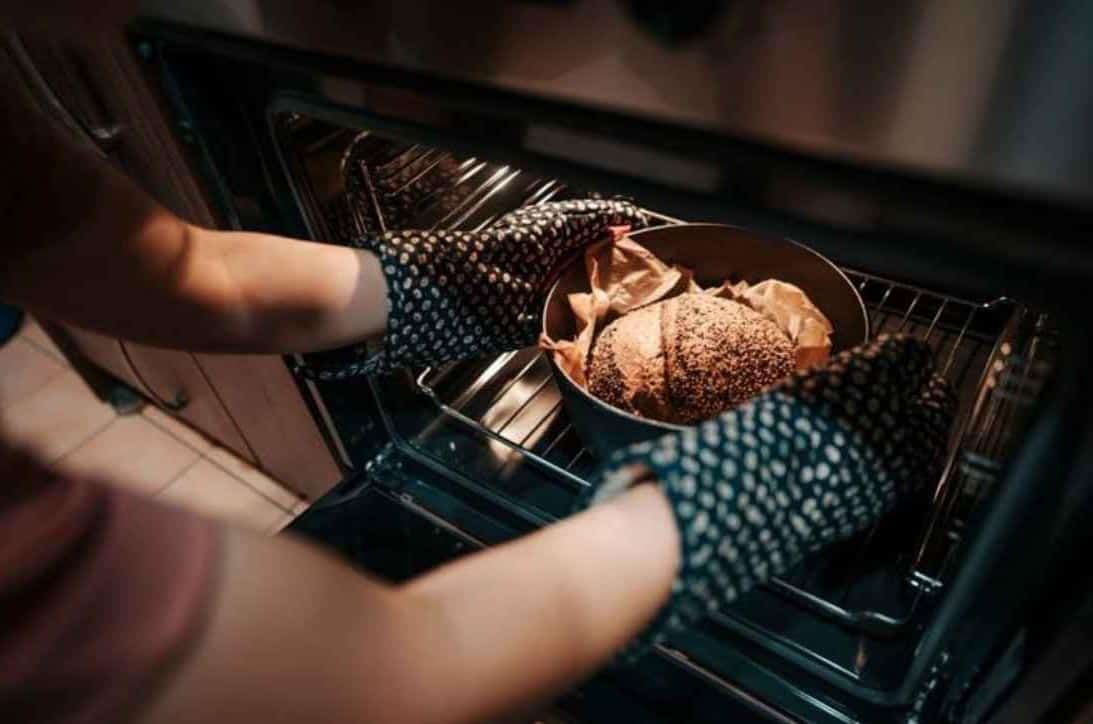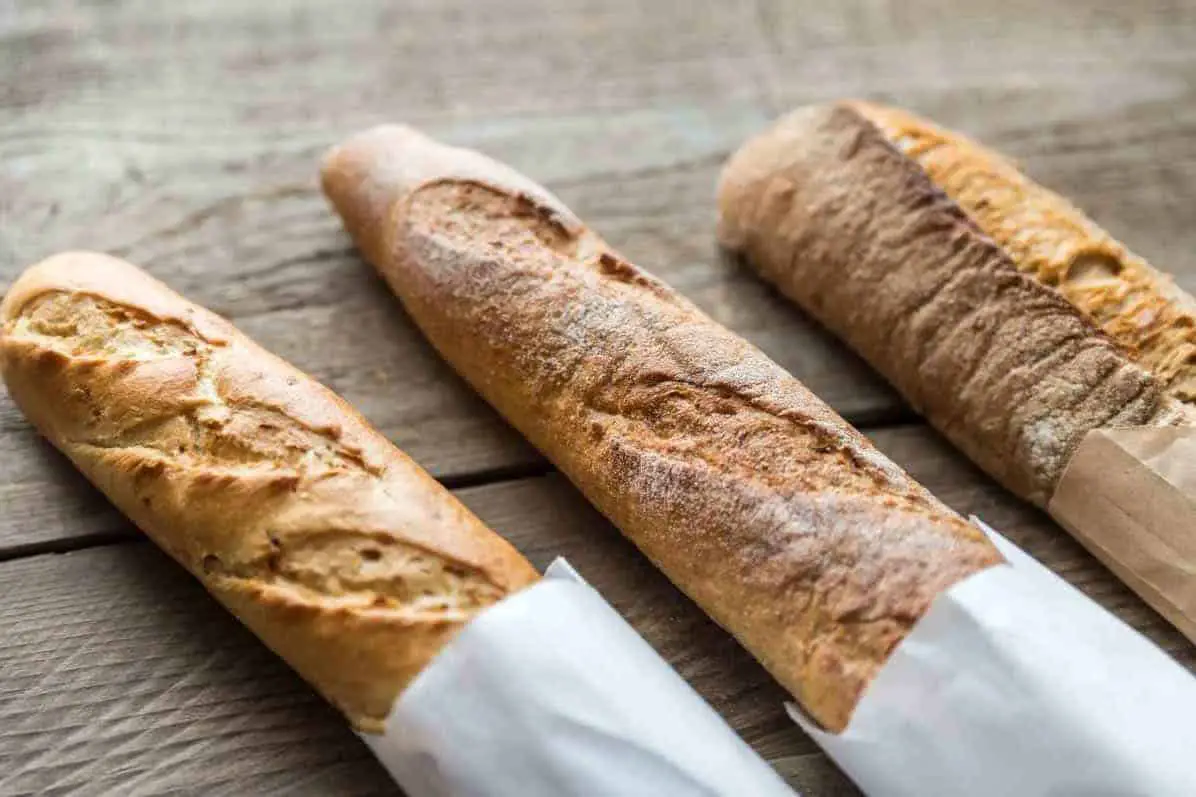Imagine being hungry and knowing the only food you have is bread. Then only to find out that it’s dry and hard. It’s frustrating, right? Before you go ballistic, read this article to get tips on how to save that rock-hard bakery treat. You’ll learn about how to soften hard bread using different methods.
Is There Hope for Hard Bread?
Do you want to hear some good news? There’s hope for hard bread! You can easily soften it with kitchen equipment that you may already have. However, you have to consume instantly. Once it goes stale again, it can’t be revived anymore. It won’t taste the same as freshly-baked bread.
Why does bread get hard anyway?
The main component of bread is starch. Starches absorb water when they undergo intense heat. When they’re in a hot oven, the starch molecules expand. Then, they become thick and gelatinous once they start to cool. It gives the bread a spongy feel.
As time progresses, the starch undergoes retrogradation. It means that the starch molecules release some of the water they absorbed earlier. Moisture creeps up the bread and evaporates as it reaches the surface. Then, the molecules go back to their original crystalline structure. It makes the bread tough and brittle.
What happens when bread goes stale?

When bread goes stale, it loses its distinctive freshness. The inside part becomes brittle and dry. The crust becomes hard, making chewing it a challenge. Stale does not mean the bread is spoiled. You can still eat it but it’s not as delectable anymore.
Bread turns stale due to two main reasons. The first one is the evaporation of water. The next one is when starch molecules go through changes as the bread heats and then cools.
Can you make hard bread soft?
Yes, you can still make that stale bread as fluffy as it was freshly baked. You need to apply heat to make the starch reabsorb water. Experts discovered that the magic happens from 131 °F up to 185 °F. Stale bread requires moderate heat to bring back its fluffy glory.
How will you know if bread has gone bad?
It can be wasteful to throw away food. It is why we need to exhaust efforts to save it. However, there are signs that dictate when bread is unsalvagable. If bread already is growing molds, it’s time to throw it away. You also need to chuck it in the trashcan when it smells funky.
Will softened bread taste the same as fresh ones?
Fortunately, softened bread will taste the same as fresh bakery treats. One tip to enjoy the same level of freshness is to eat it as soon as it’s reheated.
Method 1: Pop it in the oven

The first and most common method of softening bread is to use your trusty oven. The idea is to heat the bread until it reabsorbs moisture.
Reheat it using a lower temperature than what you use for baking. When it gets too hot inside the oven, the starch molecules may expand quickly and explode. It will make the moisture evaporate into the air.
Follow these steps to revive your stale bread:
- Do a thorough check: Inspect the bread for molds, discoloration, or unusual smells. If you find any of these spoilage signs, toss them out.
- Moisten the bread: You need to moisten the bread as a buffer for evaporation. One way of getting it moist is to brush the bread with water. This method works best for sliced or thin-crusted bread. For bread with hard crusts like a baguette or sourdough, it’s best to run them under the faucet. Just make sure to wet it for a few seconds so the bread won’t get all soggy. Avoid using this method for loaves that have been sliced already. Lastly, you can use a spritzer to wet the bread. Adjust the nozzle so that it sprays a fine mist. You can do this for all types of bread. Please ensure to use a clean spray bottle filled with clean water.
- Wrap the bread: Wrap the bread securely with aluminum foil. Make sure to pack it tightly, ensuring that there are no gaps or holes. Do this for dense loaves or hard-crusted baked goods.
- Pop it in the oven: The key to reheating stale bread is to introduce heat gradually. You don’t have to preheat the oven. Place the bread inside it and set the heat to about 300 °F. Allow the bread to sit in the heat for about 10 to 15 minutes. The reheating time will depend on how dry and dense the bread is. Check the bread at the 10-minute mark. At this point, steam forms and stays inside the foil. The bread absorbs the trapped moisture making it plump and soft
- Crisp up the crust: Slice a small piece in the corner to test its moisture. Unwrap the foil when you think the bread’s center is soft enough for you. Place the bread back into the oven and let it stay for 5 minutes more. This technique allows the excess moisture on the crust to evaporate, making it nice and crisp.
Method 2: Use the Microwave
The microwave is your best bet when you’re pressed for time. It’s the quickest way to get your bread fluffy and soft. It also gives results that last longer than oven-reheated bread.
For this method, you will use cold water and a clean paper towel. If you have full or half loaves that have gone hard, follow these directions.
- Examine the bread for molds, discoloration, or untoward aromas.
- Toss the bread out if you find any signs of spoilage.
- Moisten a piece of paper towel then squeeze out excess water.
- Wrap the bread with a moist paper towel.
- Put it inside the microwave and set the timer to five seconds.
- Bring out the bread to check if it’s soft enough for you.
- Microwave it again for another 5 seconds if you’re not satisfied with its texture.
Try the Celery Method
Yes, you’ve read it right! The celery method for softening bread exists. It’s appropriate for bags of bread that have hardened. However, it’s not advisable when you want your bread immediately. It requires planning and some foresight.
If you’re not in a hurry to eat bread, then try the following steps:
- Place one to three celery stalks inside the bag of bread slices.
- Seal the bag. Make sure there’s no way for air to escape.
- Store the bag inside the fridge for several hours. Leaving it overnight is a good idea.
- Open the bag and remove the celery stalk. You will notice that the celery has dried out.
- You may eat the bread straight from the fridge or you may toast it.
Ticks and Tips for Softening Hard Bread
Bringing stale bread back to life is pretty straightforward. Since we would love to see your “experiments” successful, we’ve gathered more tips from people who have tried them.
Check out the following hacks to get your bread from rock-hard to pillow-soft.
- You can reheat a baguette using its brown paper bag packaging. This tip is helpful when you don’t have aluminum foil available.
- Keep an eye on the bread whether you’re heating it in the microwave or the oven. You would not want burnt paper towels or bread, wouldn’t you?
- Consume bread immediately after reheating it. It will go back to its hard state when it has cooled down.
- Avoid popping the bread into the oven to soften it more than once. Every reheating process diminishes the bread’s quality.
- Prioritize softening bread in the oven instead of the microwave to get the best texture.
What if the bread can’t be softened anymore?
Suppose you tried all the methods but the bread remains hard and dry. Do you throw it away and call it a day? If there are no signs of spoilage, you can make turn hard bread into something else.
Make croutons
Croutons are toasted bread cubes that are used for soups and salads. Slice the bread into ½ inch cubes using a serrated knife. Then, toss them in some extra virgin olive oil. Next, line a sheet pan with parchment paper. Place the diced bread on the pan and bake for 3-5 minutes until it’s toasted.
Create breadcrumbs
Another use for hard bread is breadcrumbs. This kitchen helper is great as a meat breading, soup thickener, or casserole topping. Simply grate the bread on a cheese grater. Or, use a food processor to make your task easier.
Cook bread pudding
Bread pudding is a delicious treat that’s best for lazy Sunday brunches. It’s a good use for stale bread. You may also top it with vanilla ice cream for a decadent dessert.
T make this classic dish, drizzle some butter and add raisins to chopped bread. Then, combine eggs, milk, and vanilla in another bowl. Next, soak the bread in the milk mixture. Lastly, bake for 45 minutes at 350 °F.
From Hard Bread to Fluffy Treat
Bread is an energy-giving food that can sustain you any time of the day. Due to its nature, it can go stale easily. But, it’s sad to see it go to waste.
Fortunately, there are ways to transform it from hard and dry to fluffy and moist. The methods mentioned in this article are easy and fast. You can say goodbye to wasting bread.

Thanks for sharing your tips